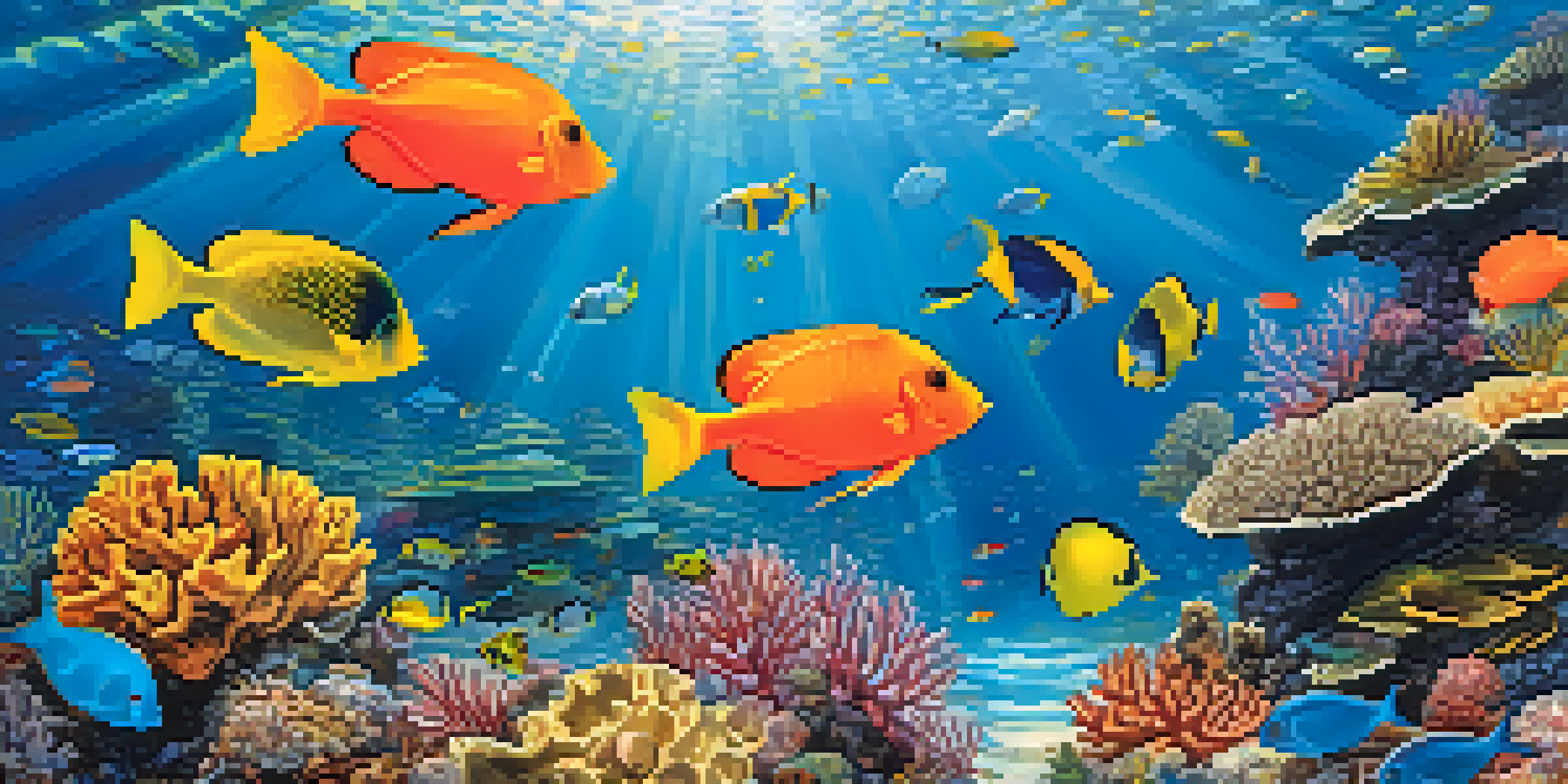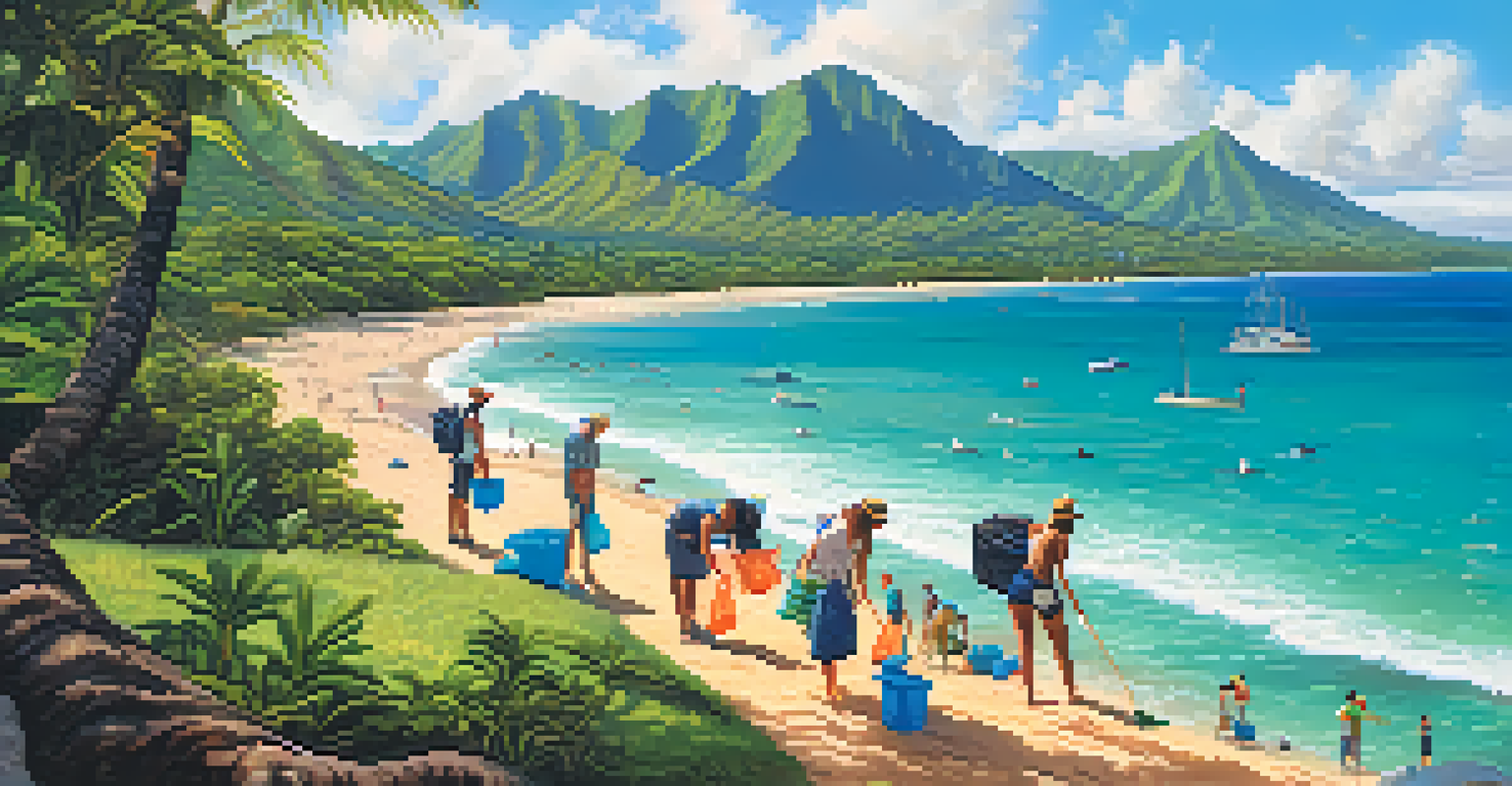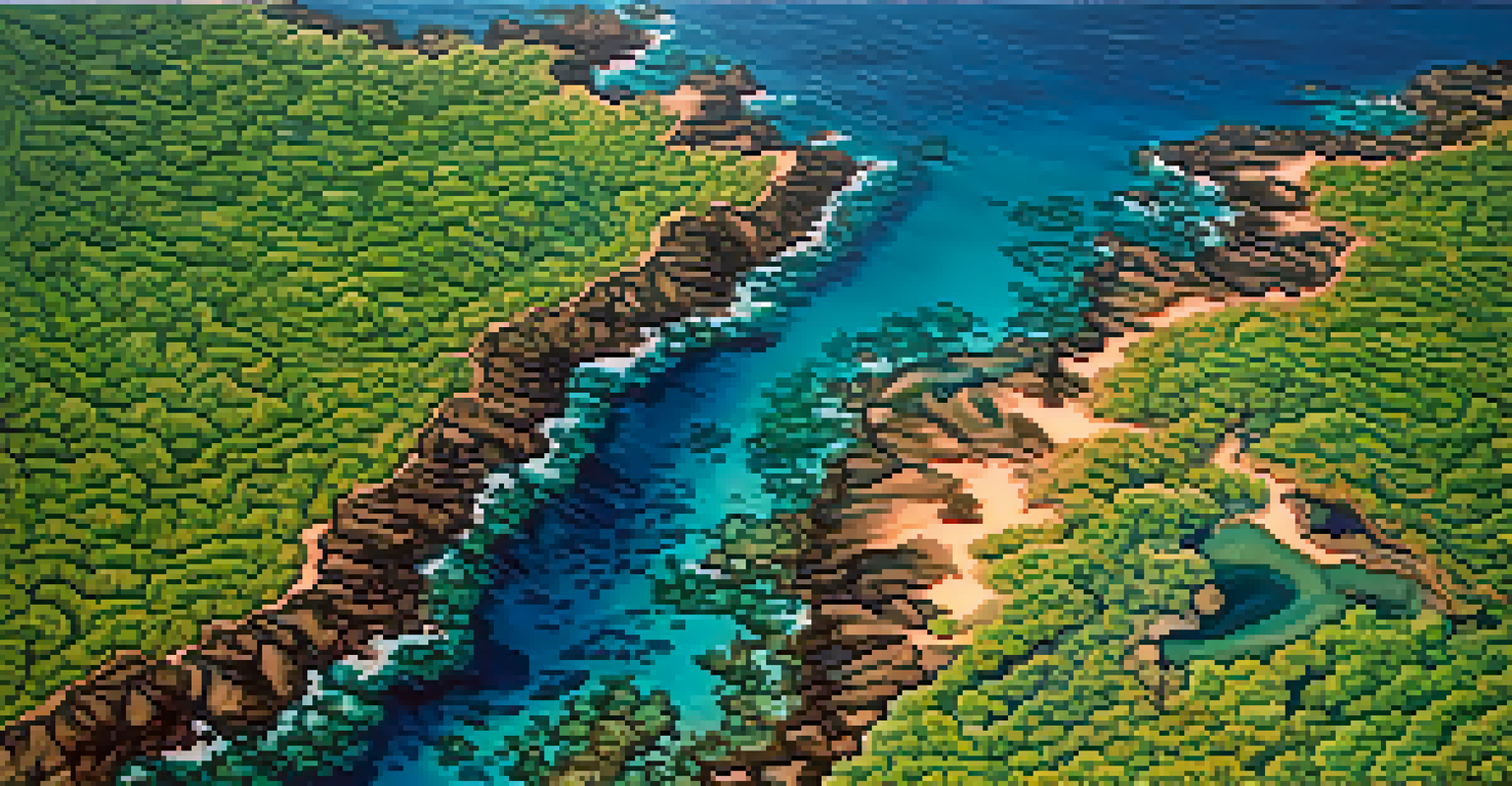The Role of Marine Protected Areas in Honolulu's Ecology

Understanding Marine Protected Areas (MPAs) in Honolulu
Marine Protected Areas (MPAs) are regions in the ocean where human activities are restricted to conserve marine life and habitats. In Honolulu, these areas play a crucial role in maintaining biodiversity, enabling various species to thrive. By limiting activities like fishing and coastal development, MPAs help to restore and protect delicate ecosystems.
The ocean is a central source of life and a critical resource for people, especially those living on islands like Hawaii.
Think of MPAs as nature's safe havens, where fish and other marine creatures can grow and reproduce without the pressures of overfishing or pollution. This not only supports the species themselves but also ensures that future generations can enjoy these resources. The establishment of MPAs around Honolulu is a commitment to preserving the beauty and health of our oceans.
Overall, understanding the purpose of MPAs provides insight into their significance in ecological conservation. They are not just boundaries on a map; they are vital tools in our fight against environmental degradation.
The Ecological Benefits of MPAs in Honolulu
One of the most significant benefits of MPAs is the enhancement of biodiversity. By providing a sanctuary for marine life, these areas allow various species to flourish and support complex food webs. For example, fish populations in protected areas often experience remarkable recovery, leading to healthier ecosystems overall.

In addition to boosting biodiversity, MPAs can help improve the resilience of marine ecosystems to climate change. Healthy coral reefs and diverse marine life are better equipped to withstand environmental stressors, such as rising sea temperatures and ocean acidification. This resilience is crucial for maintaining the balance of marine environments in Honolulu.
MPAs Enhance Marine Biodiversity
Marine Protected Areas (MPAs) provide vital sanctuaries for marine life, allowing species to thrive and ecosystems to recover.
Furthermore, the ecological benefits of MPAs extend beyond their boundaries. When fish populations thrive in protected areas, they often spill over into adjacent regions, supporting local fisheries and communities. This interconnectedness highlights the broader impact of MPAs on both marine and human life.
Cultural Significance of Marine Protected Areas
Marine Protected Areas in Honolulu are not just ecological reserves; they also hold deep cultural significance for local communities. Many Native Hawaiian traditions are closely tied to the ocean, and MPAs help preserve these cultural practices by safeguarding traditional fishing areas and practices. This connection to the sea fosters a sense of identity and belonging among community members.
In every community, there is work to be done. In every nation, there are wounds to heal. In every heart, there is the power to do it.
Moreover, MPAs enable educational opportunities for both residents and visitors. By promoting awareness of marine conservation, these areas encourage stewardship of the ocean and its resources. Programs and activities centered around MPAs can help instill a sense of responsibility towards protecting Hawaii's unique marine heritage.
Ultimately, the cultural importance of MPAs enriches the overall experience of living in or visiting Honolulu. They remind us that the ocean is not only a source of livelihood but also a vital part of our history and culture.
The Economic Impact of Marine Protected Areas
While the primary purpose of MPAs is ecological conservation, they also have significant economic implications. Healthy marine ecosystems attract tourists, which helps bolster Honolulu's economy. Activities such as snorkeling, diving, and eco-tourism are enhanced by thriving marine life, making MPAs valuable assets for local businesses.
In addition, MPAs support sustainable fishing practices. By allowing fish populations to recover and thrive, these areas can lead to more robust fisheries in the long run. This balance between conservation and economic activity helps ensure that fishing communities can continue to operate sustainably while benefiting from healthier fish stocks.
Cultural Importance of MPAs
MPAs hold significant cultural value for local communities, preserving traditional practices and fostering a connection to the ocean.
Thus, the economic impact of MPAs is multifaceted, intertwining ecological health with community prosperity. Recognizing this connection can help garner support for marine conservation initiatives in Honolulu.
Challenges Facing Marine Protected Areas in Honolulu
Despite their importance, Marine Protected Areas face challenges that threaten their effectiveness. One significant issue is illegal fishing and poaching, which can undermine conservation efforts. Ensuring compliance with regulations is vital to maintaining the integrity of these protected zones.
Another challenge is climate change, which poses a significant threat to marine ecosystems worldwide. Rising sea temperatures and ocean acidification can negatively impact coral reefs and marine life, even within protected areas. Addressing climate change requires a coordinated effort from both local communities and policymakers.
These challenges highlight the need for ongoing vigilance and adaptive management of MPAs. By fostering community involvement and investing in research, we can work towards overcoming these obstacles and ensuring the long-term success of marine conservation in Honolulu.
Community Involvement in Marine Protected Areas
Community involvement is essential for the success of Marine Protected Areas in Honolulu. Engaging local residents in conservation efforts fosters a sense of ownership and responsibility towards marine resources. When communities understand the benefits of MPAs, they are more likely to support and participate in conservation initiatives.
Education plays a crucial role in this involvement. By providing information about the importance of MPAs, organizations can empower residents to take action and advocate for marine protection. Workshops, volunteer programs, and community events can help bridge the gap between conservation goals and local participation.
Economic Benefits of Healthy MPAs
By attracting tourism and supporting sustainable fisheries, MPAs contribute positively to the economy of Honolulu.
Ultimately, community engagement enhances the effectiveness of MPAs. When residents are actively involved, they become stewards of the marine environment, ensuring that these areas continue to thrive for generations to come.
Future Directions for Marine Protected Areas in Honolulu
Looking ahead, the future of Marine Protected Areas in Honolulu holds great promise. As awareness of the importance of marine conservation grows, there is potential for expanding existing MPAs and establishing new ones. This expansion can enhance ecological resilience and provide even more significant benefits to local communities.
Collaboration among stakeholders, including government agencies, local communities, and conservation organizations, will be vital in shaping the future of MPAs. By working together, these groups can develop innovative solutions to address challenges and optimize the management of marine resources.

In conclusion, the future of Marine Protected Areas in Honolulu looks bright, provided that we prioritize collaboration, education, and sustainable practices. Together, we can ensure that these vital ecosystems continue to thrive and support the diverse marine life that makes our oceans so special.